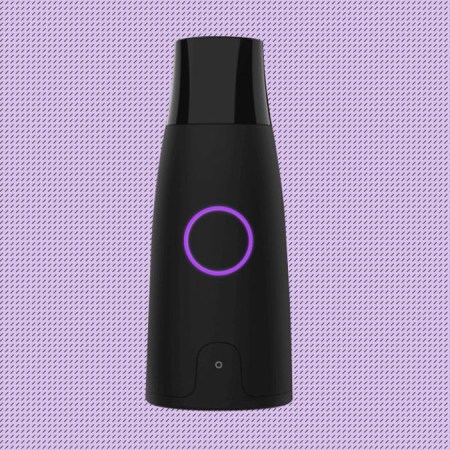America runs on inflammation. Tack all the usual chronic disease suspects up onto a corkboard — autoimmune disorders, cardiovascular disease, cancer, hypertension, arthritis, even depression — and start making connections. Every single one will link back to inflammation by a red string.
Research out of Vanderbilt University suggests that “80% of all major human diseases are mediated by inflammation.” It’s the ultimate equalizer. According to health statistics last updated in August 2023, 60% of people worldwide die on account of these “chronic inflammatory diseases.” And that’s after potential decades of living with chronic inflammation, which is no walk in the park, either.
What is inflammation, though? As is too often the case with health vocabulary, the word has morphed into empty shorthand for something bad — a condition we ought to stay mindful of, something to “reduce” if we can — without really meaning anything.
But grappling with inflammation head-on is your best prescription for improving your lifespan (the amount of years you have left) and your healthspan (the amount of healthy years you have left). Below, a review of what the word actually means, key details to keep in mind, symptoms to look out for and seven steps to put your body on the best path forward.
The Leap of Faith That Could Whip You Into Shape
Workout classes change lives. We spoke to a panel of devotees.Understanding Inflammation
For starters: inflammation isn’t all bad, all the time. It’s a naturally occurring process, by which your body’s response system (white blood cells, antibodies, proteins) works to protect you from injuries and infections. That said, there are wildly different forms of inflammation. Here are the key distinctions to keep in mind:
- The difference between acute and chronic inflammation…
The former is a short-term response with familiar localized effects (redness, warmth, swelling and pain). It’s the body’s standard method of handling injury or infection — curing a paper cut, conquering the common cold, etc. The latter, chronic inflammation, is long-term. It can arrive without any obvious triggers, and is associated with all of those chronic conditions outlined earlier.
- How chronic inflammation manifests in the body…
In the most elementary terms, chronic inflammation occurs when the body’s response to an injury or infection A) isn’t successful and B) isn’t able to subside. It keeps sending its normal emergency protein packages, but they only make the issue worse.
- Some genetic and lifestyle factors that contribute to chronic inflammation…
It’s important to point out that some forms of chronic inflammation don’t have an obvious underlying cause, but there some common compounding risk factors, like long-term exposure to irritants (e.g., sanitizers, chemicals or hazardous work environments), autoimmune disorders and chronic infections. Then, of course, there’s the usual stuff that doesn’t help: smoking, alcohol, obesity and stress.
- How you perceive chronic inflammation in the body...
Chronic inflammation is infamously insidious. It can be on its low setting, around the clock — quietly damaging DNA and pushing you deeper into a chronic disease — and you won’t even notice. Still, there are some symptoms to look out for, including fatigue, joint stiffness, fluctuations in weight, insomnia and gastrointestinal issues.
A 7-Step Plan to Manage Inflammation
Step 1: Cut Back on the Obvious Culprits
There’s a lot that the doctors researching chronic inflammation still don’t know, but there are some clear-cut culprits that they’re confident are contributing to inflammation. Inflammatory habits like smoking and binge drinking are no-nos. Dropping them from your life (or mitigating the alcohol consumption, at least) will give your body the chance it deserves. Not far behind the cigs and Bud Heavies? Processed foods. Deli meats, hamburgers, soda, refined breads or pastas, snack foods, deep-fried delights…they may taste heavenly, but they’re inflammatory.
Step 2: Hammer the Healthy Stuff
What should you eat instead? Fret not, this isn’t where we tell you to pour 12 almonds into a bowl. (Though almonds have anti-inflammatory effects, according to Penn Medicine!) You basically want to focus on “clean eating” — fresh fruits, fresh veggies, beans, eggs, fatty fish (like salmon or tuna) and lean protein (like grilled chicken or ground beef). If you feel like you’ve heard the term “whole foods” a million times and still have no clue what that means, take a look at this helpful pyramid. (It’s only missing the fish and animal proteins, as it’s plant-based.) Eating this way is one your best defenses against inflammation, but will also work wonders for your mood, energy and gut health. It’s also cheaper than you think: you can absolutely buy frozen produce!
Step 3: Schedule Regular Checkups
We’ve written in the past about men’s reluctance to attend annual checkups. “Doctor-dodging.” It’s particularly dangerous where chronic inflammation is concerned, considering how difficult the issue is to detect, even when systemic. Regular health screenings are crucial for identifying potential issues before they become severe. Depending on your health markers, relevant symptoms and family history, doctors may issue blood tests to assess your levels of C-reactive protein (CRP) and fibrinogen. If you’re concerned about chronic inflammation, schedule an appointment with your primary care provider.
Step 4: Work Up a Sweat
Reason #4000 to exercise. Exercise has the power to reduce inflammatory biomarkers (like CRP) in “in individuals with conditions associated with elevated inflammation.” There was already a Mount Everest of studies supporting this concept; and last fall, Harvard Medical School got into the molecular weeds with more proof that we have a “natural way to boost the body’s immune responses to reduce inflammation.” It’s in your power. Don’t sweat the specifics of how you work out. Just aim to engage in at least 150 minutes of moderate aerobic activity (running, cycling, swimming) or 75 minutes of vigorous activity (spinning, HIIT, circuit training, sprints, etc.) each week. If you can fit in a strength training session or two, too, you’re golden.
Step 5: Don’t Ignore Your Belly Fat
Even in the body-positivity era, it’s important to remember that belly fat, or visceral fat, is is one of the few effective surface-level indicators of less-than-stellar health. It’s a predictor for a higher risk of cardiovascular disease, type 2 diabetes, colorectal cancer, sleep apnea and high blood pressure. That’s all serious stuff; doctors classify any male waist measurement of 40 inches or more as “an unhealthy concentration” of belly fat. It also — surprise, surprise — secretes molecules that increase inflammation. So it’s in your best interest to not have belly fat…just don’t try to target it directly (spot reduction doesn’t work). Some of us, of course, have a harder time ditching belly fat due to genetics. All you can do is focus on the exercise and dietary advice above.
Step 6: Manage Your Burnout
Sleep deprivation remains one of the worst things human beings inflict on their bodies. (We’re the only mammal that willingly does it!) This contributes to chronic inflammation in myriad ways, but for our money, here’s the most compelling, per Harvard Health: “In the deepest sleep phases, cerebrospinal fluid rushes through the brain, sweeping away beta-amyloid protein linked to brain cell damage.” Sleep essentially power-washes the mind. On top of making sure you’re getting at least seven hours a night, you also want to make sure the laptop is closed well before bed. Chronic stress contributes significantly to inflammation. Practice deep breathing exercises to supercharge your stress response. We’d start with these 10 for better sleep, fitness and calm.
Step 7: Avoid Food Sensitivity Tests, for Now
The deeper you delve into anti-inflammatory research, the likelier it is that you’ll encounter “take-home food sensitivity kits.” They analyze a patient’s blood against a long list of common foods and food ingredients. Labs like Everlywell pitch a two-part elimination diet. The test may decide, for example, that you’re surprisingly sensitive to apples and eggs, with data revealing “abnormal antibody reactivity.” You’re supposed to then A) remove them from your diet for a period of time, before B) eventually reintroducing them, and monitoring symptoms along the way. It’s a compelling idea, but these tests have been linked to eating disorders, lack a clear definition of what food sensitivity means and are awaiting concrete support or evidence from medial researchers. For now, focus on clean, mindful eating and the hands-on expertise of your doctor.
Whether you’re looking to get into shape, or just get out of a funk, The Charge has got you covered. Sign up for our new wellness newsletter today.

























